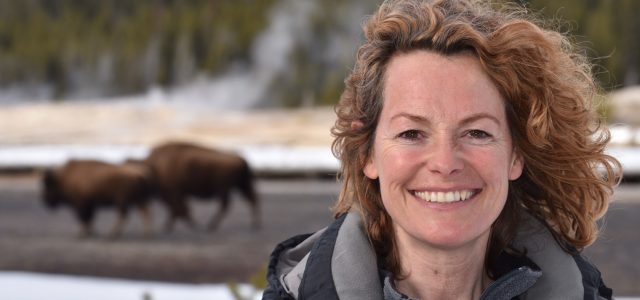
KATE HUMBLE IS THINKING ON HER FEET…
Gail Bailey chats to TV’s Autumn Watch star Kate Humble about her inspirational new book
Hippocrates said over 2000 years ago: “Walking is a man’s best medicine” and now growing scientific evidence suggests that he was indeed correct. While a recent Public Health England report alarmingly stated that four out of 10 middle aged adults in the UK (which equates to about six million people), fail to manage even one brisk 10 mile walk a month, we have Kate Humble to thank for her fabulous new book, Thinking on My Feet: The Small Joy of Putting One Foot in Front of the Other.
Kate, a broadcaster and writer, regularly seen on much loved BBC television programmes such as Autumn Watch and Spring Watch has delightfully journalled her daily walks, and runs, into a beautiful collection with high accolades from many including Simon Reeve, Benedict Allen and Ranulph Fiennes who describes it as: “An enticing read that makes every walk Humble describes, an adventure”.
Growing up in the countryside, Kate recounts that her life was always very active and involved riding horses and building dens, but not really walking. She even remembers as a young woman climbing a mountain in Wales and cursing every step!
Over time however and certainly in the last 20 years, Kate started to really appreciate the connection with her surroundings, and began to sense how moving at walking pace could help make problems and anxieties lessen, and that it wasn’t just what she could see and notice around her but how emotively these affected her: “As I started to realise how walking made me feel and that it helped me to formulate ideas and work things out, I wanted to share it. I thought, I talked and of course I walked, before putting the proposal for the book forward.”
Research shows us that our brain function and cognitive ability is much improved after walking, but this is even greater if that walking is in a green space.
The interesting concept that threads through the book is as a human race we have evolved to be upright and therefore walkers, and that as the physiological urge to be nomadic is present, our brains, as Kate points out in the book, are therefore stimulated by walking.
Kate’s default is to walk alone, mostly as she tends to walk with her dogs very early in the morning so it’s practically easier, but also because it helps to create ‘headspace’ that can only really be achieved in solitude. She leaves her phone at home to rid herself of any possible interruptions, to be able to feel liberated and to take in the small joys around her such as the first bluebell of spring or the changing of colour of the leaves as autumn approaches.
The book cover is beautiful and indicative of nature and the countryside, as a reader it makes you want to pick it up and see what’s inside – the cover itself forms part of the book’s story. On her walks Kate connected with others who inspired her and demonstrated the power and positivity of human nature. One of these was an artist, Paul West, who uses his walks to immerse himself in the landscapes as inspiration for his next painting. He created the cover from a wonderful project he did known as ‘Silent Voices’, a story Kate tells in the book, which is heart-warming, but not to be spoilt by telling it here!
Other people Kate encountered who feature in the book are Sam, who takes people battling with addiction or mental health problems to climb mountains and has remarkable results and Ursula, who is not an athlete or a runner but when diagnosed with cancer decided to walk every footpath in Wales (3,700 miles). This is amazing by anyone’s standards but the positive effect that humanity had on her battle through those she met along the way, and the positive curative effect that connecting with nature had on allowing her to re-find herself, is wonderful to hear.
“Talking to others about their experiences made me realise I’m not a freak. I know I don’t have an illness or any demons to battle so my benefits seem small in comparison, but spending time with them reaffirmed how I felt about the simple but powerful activity of putting one foot in front of the other.”
As Kate explores the reasons why we walk her reflections and insights will encourage and motivate the reader to apply walking to their daily endeavours: “There is no such thing as the wrong weather to walk in!” Kate says as her final words: “There is something rather wonderful about embracing the weather!”
Good advice indeed and a further indication of Kate’s enthusiasm radiating through the discovery that going for a daily walk has become as essential to her feeling good, as that first cup of tea of the day!

